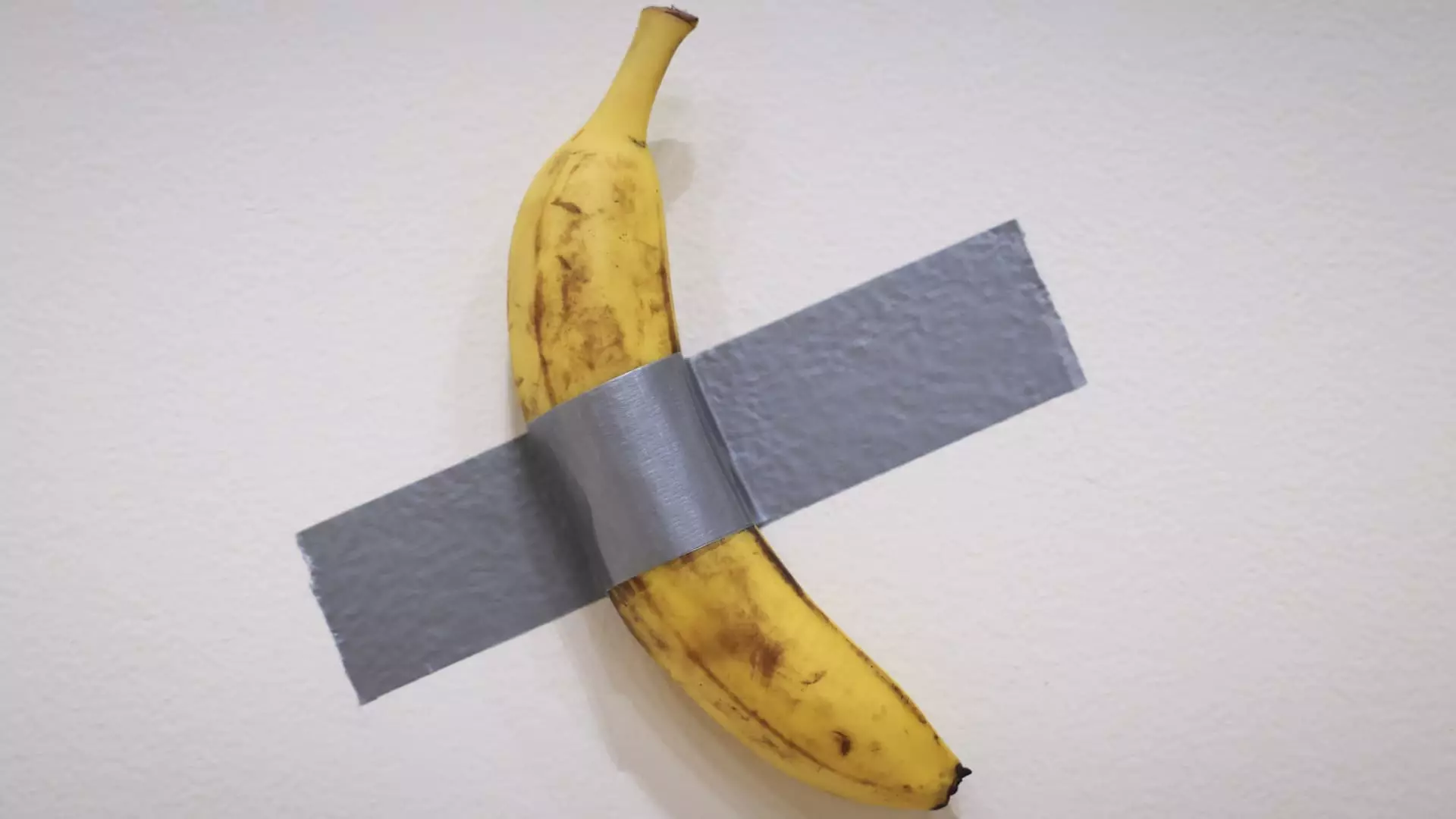The recent auction held by Sotheby’s where crypto investor Justin Sun purchased a duct-taped banana for an astounding $6.2 million has created waves within both the art world and cryptocurrency communities. This event goes beyond the eccentricity of the artwork; it shines a light on the rapidly evolving landscape of cultural phenomena where art, memes, and digital currency intertwine.
Maurizio Cattelan’s piece, titled “Comedian,” epitomizes the increasingly bizarre yet fascinating realm of contemporary artwork. The ludicrous idea of a banana affixed to a wall with duct tape, before its auction price skyrocketed, may appear to many as a critique of the extremes to which the art market has gone. Notably, when “Comedian” first made headlines at Art Basel Miami Beach in 2019 with a price tag of $120,000, it already showcased the absurdity of commodifying concepts that defy traditional artistic values. The dynamics surrounding the piece reveal much about how cultural commentary and humor can generate financial gain, ultimately transforming even the simplest objects into valuable art pieces.
It invites us to question not just what art is today, but how it is valued. Sun himself stated that the purchase represents “a cultural phenomenon,” thus placing himself within a narrative that elevates the significance of the piece beyond its physical form. This raises philosophical questions: Is the true value of “Comedian” found in its concept, the spectacle it creates, or in its affiliation with the cryptocurrency movement?
The similarities between the banana and non-fungible tokens (NFTs) cannot be overstated. Just as NFTs are defined not by the digital assets themselves but by the smart contracts guaranteeing their authenticity, so too does the “Comedian” derive its worth from the accompanying certificate. The irony lies in the fact that the banana, while a key component of this artwork, is entirely organic and fleeting—it will inevitably rot, prompting the need for replacement. Cattelan’s creation thus embodies the fragile nature of both art and value in a commodified world.
Moreover, Sun’s decision to purchase the banana using cryptocurrency illustrates an ongoing trend where digital currencies are becoming a preferred means of transaction for high-value artworks. In this context, Sun’s victory at the auction is not merely an investment in a quirky art piece but a statement that reflects a shift in purchasing norms among the wealthiest collectors.
The impressive figures reported in recent auctions, including a Monet selling for $65.5 million, mark a promising rebound in the art market. Following a challenging period characterized by economic downturn and uncertainty, the sale demonstrates increased confidence among wealthy collectors, likely influenced by the roaring stock market. This comeback is not just about recovery; it represents a renaissance in the demand for both traditional and avant-garde forms of art, with works like “Comedian” leading the charge.
The implications of Cattelan’s banana extend when viewed through a cultural lens. It serves as both an object of ridicule and consideration, prompting discussions around value, spectacle, and representation in a digital age. Collectors like Sun invest not just in art but in ideas—in narratives that bridge gaps between the realms of art and contemporary trends like cryptocurrency and meme culture.
As we step deeper into an age where digital art and traditional collectibles continue to intertwine, one can only wonder about the future of artworks akin to “Comedian.” Will absurdity remain a valid currency in the art market? Or will the focus once again shift back to the classics as societal values evolve? Regardless, Justin Sun’s purchase adds a marker in the ongoing dialogue about art’s role in reflecting and shaping culture. One thing is certain: the banana will remain a crucial artifact—one that transcends its trivial nature and encapsulates the complexity of modern artistic expression.


Leave a Reply